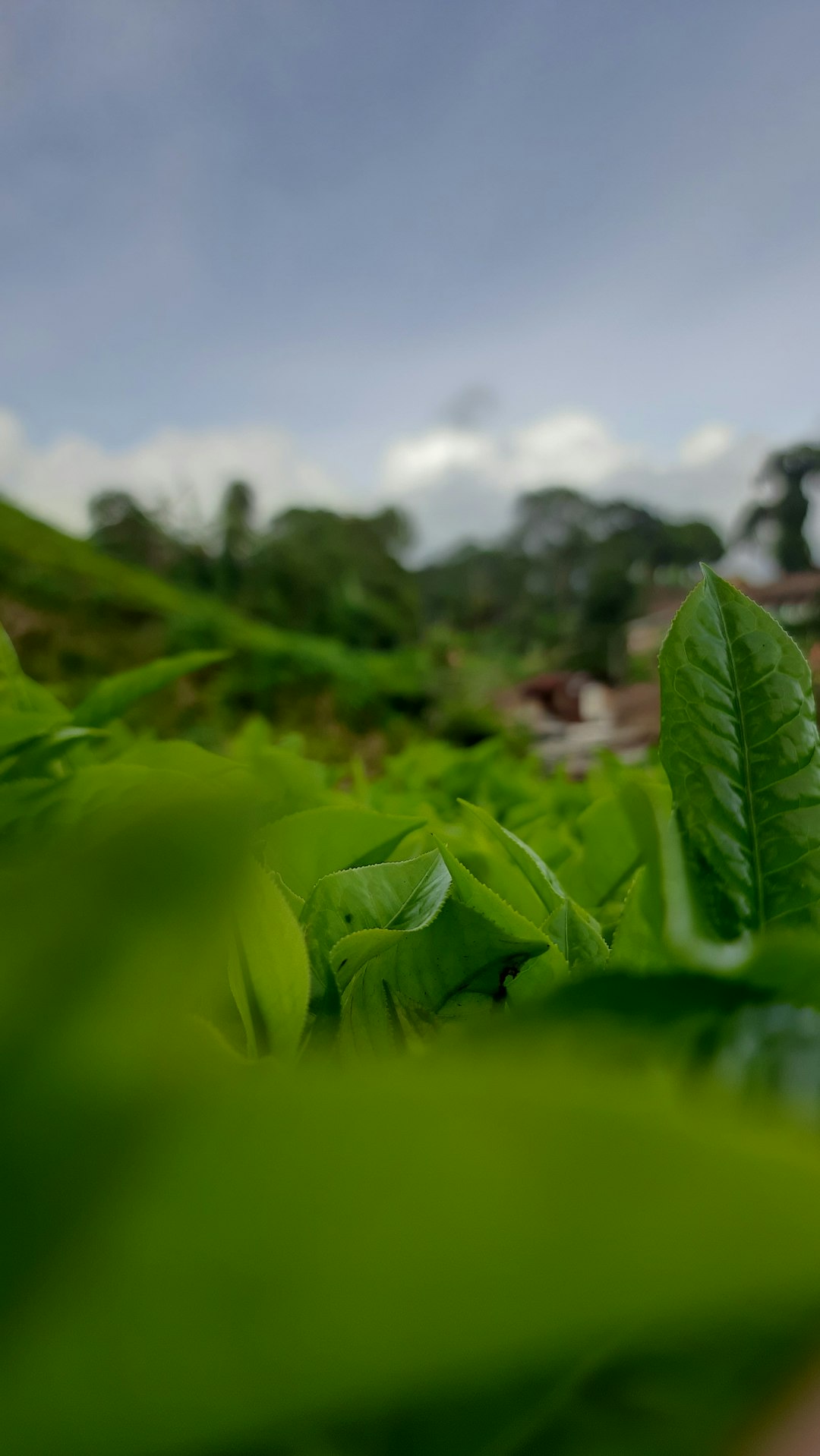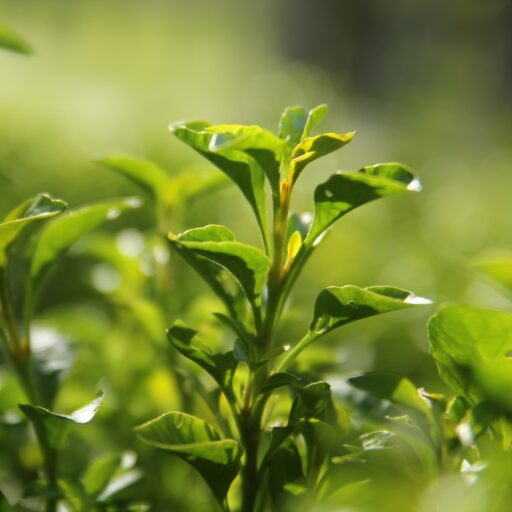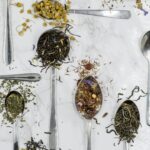Support our educational content for free when you purchase through links on our site. Learn more
Discover 10 Essential Black Tea Seeds for Planting: Your Guide to Growing the Perfect Brew! 🌱

Have you ever sipped a warm cup of black tea and wondered about the journey those leaves took to your cup? Imagine cultivating your own tea garden, where you can grow the very seeds that will produce your favorite brews! In this comprehensive guide, we’ll unveil 10 essential black tea seeds for planting that can transform your garden into a tea lover’s paradise.
Did you know that black tea, green tea, and even oolong tea all come from the same plant, Camellia sinensis? The magic lies in how the leaves are processed! As we explore the fascinating world of tea cultivation, you’ll learn not only how to plant and care for these seeds but also the rich history behind each variety. So, grab your gardening gloves and get ready to dig into the delightful world of black tea!
Key Takeaways
- Black tea seeds come from the Camellia sinensis plant, the source of all tea types.
- Cold stratification is essential for germinating black tea seeds, mimicking winter conditions.
- Choosing the right variety is crucial; options like Assam and Darjeeling offer unique flavors and growing experiences.
- Caring for your tea plants involves regular watering, fertilizing, and pruning to ensure healthy growth.
- Harvesting and processing your own tea leaves can be a rewarding experience, connecting you to the rich history of tea.
Ready to start your tea-growing journey? 👉 Shop for Camellia sinensis seeds and other tea plant varieties to kick off your adventure today! 🌿 Explore Tea Plant Seeds
Table of Contents
- Quick Tips and Facts About Black Tea Seeds for Planting 🌱
- The Fascinating History of Black Tea and Its Seeds 📜
- Choosing the Right Black Tea Seeds for Your Garden 🌍
- How to Plant Black Tea Seeds: A Step-by-Step Guide 🌿
- Caring for Your Black Tea Plants: Tips for Success 🌞
- Common Pests and Diseases: Protecting Your Black Tea Plants 🐛
- Harvesting and Processing Your Black Tea Leaves 🍃
- The Best Regions for Growing Black Tea 🌏
- Exploring Different Varieties of Black Tea Seeds 🌈
- Frequently Asked Questions About Black Tea Seeds ❓
- Conclusion: Sip Your Success with Homegrown Black Tea ☕
- Recommended Links for Tea Enthusiasts 🔗
- Reference Links for Further Reading 📚
1. Quick Tips and Facts About Black Tea Seeds for Planting 🌱
Is tea easy to grow? Discover 10 Essential Tips for Success! 🍵
At Growing Teas™, we’re passionate about all things tea, and that includes helping you cultivate your own! So, you’re thinking about planting black tea seeds? Fantastic! It’s a rewarding journey, but before you dive in, here are some quick tips and fascinating facts to get you started:
- Fact: Black tea, green tea, white tea, oolong, and dark tea all originate from the Camellia sinensis plant. The difference lies in processing. Source: World Tea News
- Tip: Black tea seeds need a period of cold stratification to mimic winter conditions and encourage germination. Think of it as a little “spa day” for your seeds!
- Fact: Tea plants thrive in acidic soil. A pH of 4.5-5.5 is ideal. Source: The Spruce
- Tip: Patience is key! Black tea seeds can be slow to germinate, sometimes taking several weeks or even months. Don’t give up!
- Fact: Tea plants prefer partial shade, especially during the hottest part of the day. They appreciate a bit of a “siesta” in the afternoon.
- Tip: Keep the soil consistently moist but not waterlogged. Tea plants like a good drink, but they don’t want to swim!
- Fact: You can grow tea plants in containers, making it possible even for those without a garden. Balcony tea party, anyone?
- Tip: Regular pruning will encourage bushier growth and more tea leaves to harvest. It’s like giving your tea plant a stylish haircut!
- Fact: The “Black Sea Tea” variety is known for its cold hardiness, making it a good choice for cooler climates. Source: Camellia Forest
- Tip: Join online tea growing communities for support, tips, and shared experiences. It’s like having a tea party with fellow enthusiasts!
2. The Fascinating History of Black Tea and Its Seeds 📜

Dive into the captivating history of tea with our History of Tea category!
Legend has it that tea was discovered by the Chinese Emperor Shennong in 2737 BC when tea leaves accidentally fell into his boiling water. Whether or not this story is true, it’s clear that tea has a long and rich history, intertwined with culture, trade, and even revolution! Black tea, specifically, emerged later through various oxidation processes, giving it its distinctive dark color and robust flavor. Initially, tea seeds were a closely guarded secret, but as trade routes expanded, so did the reach of the tea plant. Today, you can cultivate this piece of history in your own backyard!
From Ancient China to Your Garden
Imagine holding a tiny black tea seed in your hand, a direct descendant of the ancient tea plants that fueled empires and inspired poets. It’s a tangible connection to a rich heritage, and now, you have the opportunity to nurture that legacy.
3. Choosing the Right Black Tea Seeds for Your Garden 🌍
Explore the ideal conditions for tea cultivation in our Soil and Climate for Tea category!
Not all black tea seeds are created equal. Just like choosing the right tea blend for your mood, selecting the right seeds for your climate and growing conditions is crucial. Consider factors like hardiness zones, disease resistance, and even the flavor profile of the mature tea leaves.
Popular Black Tea Varieties for Seed Starting
- Assam: Known for its malty flavor and briskness.
- Darjeeling: Often called the “Champagne of teas,” with a delicate, floral aroma.
- Ceylon: A versatile tea with a range of flavor profiles, from bright and citrusy to rich and bold.
- Keemun: A Chinese black tea with a subtle orchid fragrance.
Matching Seeds to Your Climate
If you live in a cooler climate, look for cold-hardy varieties like the “Black Sea Tea” mentioned by Camellia Forest: “These plants have similar genetics to ‘Sochi’, so we expect good vigor and cold hardiness.” For warmer climates, you have a wider range of options.
4. How to Plant Black Tea Seeds: A Step-by-Step Guide 🌿
Ready to get your hands dirty? Here’s a step-by-step guide to planting black tea seeds:
- Cold Stratification: Place your seeds in a damp paper towel inside a sealed plastic bag and store them in the refrigerator for 4-8 weeks. This mimics winter conditions and prepares the seeds for germination.
- Soaking (Optional): Some growers soak their seeds in lukewarm water or even cooled black tea, as discussed on the SRGC forum, for 24 hours before planting. One user, Lesley Cox, shared her success with this method.
- Planting: Sow the seeds about ½ inch deep in a well-draining seed-starting mix.
- Watering: Keep the soil consistently moist but not waterlogged.
- Light: Place the seed tray in a location with indirect light.
- Patience: Germination can take several weeks or even months. Don’t despair! Think of it as a test of your dedication to the art of tea cultivation.
- Transplanting: Once the seedlings have a few true leaves, you can transplant them into larger pots or directly into your garden.
5. Caring for Your Black Tea Plants: Tips for Success 🌞
Nurturing your tea plants is like nurturing any cherished relationship – it requires attention, care, and a touch of love. Here are some tips to help your tea plants thrive:
- Watering: Water deeply and regularly, especially during dry periods.
- Fertilizing: Use a balanced fertilizer specifically formulated for acid-loving plants.
- Pruning: Prune regularly to encourage bushier growth and more tea leaves.
- Pest and Disease Control: Be vigilant for pests and diseases and take action promptly.
- Winter Protection: In colder climates, protect your tea plants from frost damage.
6. Common Pests and Diseases: Protecting Your Black Tea Plants 🐛
Just like any garden plant, tea plants can be susceptible to pests and diseases. Here are some common culprits to watch out for:
- Aphids: These tiny insects can suck the sap from your tea plants, weakening them and making them more susceptible to diseases.
- Spider Mites: These pests can cause leaf discoloration and webbing.
- Blister Blight: A fungal disease that can cause lesions on the leaves.
7. Harvesting and Processing Your Black Tea Leaves 🍃
The moment you’ve been waiting for! Harvesting your own tea leaves is a truly special experience. Here’s a basic overview of the process for black tea:
- Plucking: Harvest the top two leaves and a bud, known as the “flush.”
- Withering: Spread the leaves out on a tray to allow them to wilt.
- Rolling: Roll the leaves to break the cell walls and release enzymes.
- Oxidation: Spread the rolled leaves out and allow them to oxidize, which is what gives black tea its characteristic dark color and flavor.
- Drying: Dry the leaves to stop the oxidation process.
8. The Best Regions for Growing Black Tea 🌏
While tea can be grown in a variety of climates, certain regions are particularly well-suited for black tea production. These include:
- India: Home to famous tea regions like Assam and Darjeeling.
- China: The birthplace of tea, with a long history of black tea cultivation.
- Sri Lanka: Known for its Ceylon tea.
- Kenya: A major producer of high-quality black tea.
9. Exploring Different Varieties of Black Tea Seeds 🌈
The world of black tea is vast and diverse, with a seemingly endless array of varieties to explore. From the bold and malty Assam to the delicate and floral Darjeeling, there’s a black tea to suit every palate. Experimenting with different varieties can be a fun and rewarding way to discover your personal favorites. Seedville USA offers a variety of tea plant seeds, including those for both black and green tea. They highlight that “Both black and green teas come from this plant; black tea is fermented, green tea is not.” This allows you to explore the fascinating world of tea processing from the comfort of your own garden.
Conclusion: Sip Your Success with Homegrown Black Tea ☕

Congratulations! You’re now equipped with all the knowledge you need to embark on your journey of growing black tea from seeds. 🌱 Whether you choose the robust Assam, the delicate Darjeeling, or the cold-hardy “Black Sea Tea,” each seed holds the promise of a delightful cup of tea in your future.
Product Summary
If you’re considering the Camellia sinensis “Black Sea Tea” seeds from Camellia Forest, here’s a quick recap of the positives and negatives:
Positives:
- Cold Hardiness: Ideal for cooler climates (Zones 7a-9).
- Provenance: Seeds from a reputable source with a rich history in tea cultivation.
- Genetics: Similar to the well-regarded ‘Sochi’ variety, promising good vigor.
Negatives:
- Availability: Currently sold out, so you may need to wait for restocking.
- Shipping Time: Up to one month for delivery, which can test your patience.
Overall, we confidently recommend these seeds for anyone serious about cultivating their own black tea. They offer a unique opportunity to grow a piece of tea history right in your backyard!
Recommended Links for Tea Enthusiasts 🔗
- 👉 Shop Camellia sinensis “Black Sea Tea” seeds on: Camellia Forest
- 👉 Shop Tea Plant Seeds on: Seedville USA
- Books on Tea Cultivation:
Frequently Asked Questions About Black Tea Seeds ❓
How long does it take for black tea seeds to germinate and grow into a harvestable plant?
Germination Time: Black tea seeds can take anywhere from 4 weeks to several months to germinate, depending on the conditions.
Growth to Harvest: Once germinated, it typically takes 3-5 years for the plants to mature enough to produce harvestable leaves. Patience is key, as your dedication will be rewarded with delicious tea!
What are the ideal climate and soil conditions for planting and growing black tea seeds?
Climate: Black tea thrives in humid, tropical to subtropical climates. However, certain varieties, like the “Black Sea Tea,” can tolerate cooler temperatures (Zones 7a-9).
Soil Conditions: The ideal soil for black tea is well-draining, acidic (pH 4.5-5.5), rich in organic matter. Consider amending your soil with compost to enhance its nutrient content.
Can black tea seeds be started indoors and then transplanted outside, or is direct sowing recommended?
Starting Indoors: Yes, you can start black tea seeds indoors! This method allows for better control over temperature and moisture. Once seedlings have a few true leaves, they can be transplanted outdoors after the last frost.
Direct Sowing: While direct sowing is possible, it may expose seeds to unfavorable conditions, especially in cooler climates. Starting indoors can give your seeds a head start!
Are there any specific black tea varieties that are well-suited for home gardeners and small-scale tea cultivation?
Recommended Varieties:
- “Black Sea Tea”: Great for cooler climates and known for its cold hardiness.
- Assam: Robust and easy to grow, perfect for beginners.
- Darjeeling: A bit more delicate but offers a unique flavor profile.
These varieties not only adapt well to home gardening but also provide a delightful tea experience!
Reference Links for Further Reading 📚
- Camellia Forest – Black Sea Tea Seeds
- Seedville USA – Tea Plant Seeds
- World Tea News – Understanding Tea Types
- The Spruce – Growing Tea Plants
With this knowledge, you’re ready to embark on your tea-growing adventure! Happy planting! 🌿



